Scotland Garden Tour, Hardy Geraniums, Storage Tomatoes and Pruning Blueberries

As the calendar turns to April, the activity ramps up in our zone 5 garden. A late snowstorm last week didn’t deter me from starting more seeds indoors and getting plants ready for spring. In this newsletter I’ll be talking about hardy geraniums (one of my favorite, low maintenance perennials), some cool varieties of tomatoes that last months after harvest fresh and pruning blueberries.
Before we jump into all the gardening how-tos, I want to let you know about some openings in my Cultural and Garden Tour of Scotland from September 9th to 17th, 2025. This tour was sold out, but now has some openings. It’s a great chance to see Scotland through the lens of private and public gardens, dramatic culture and history and beautiful natural scenery. Check out the details in this newsletter.
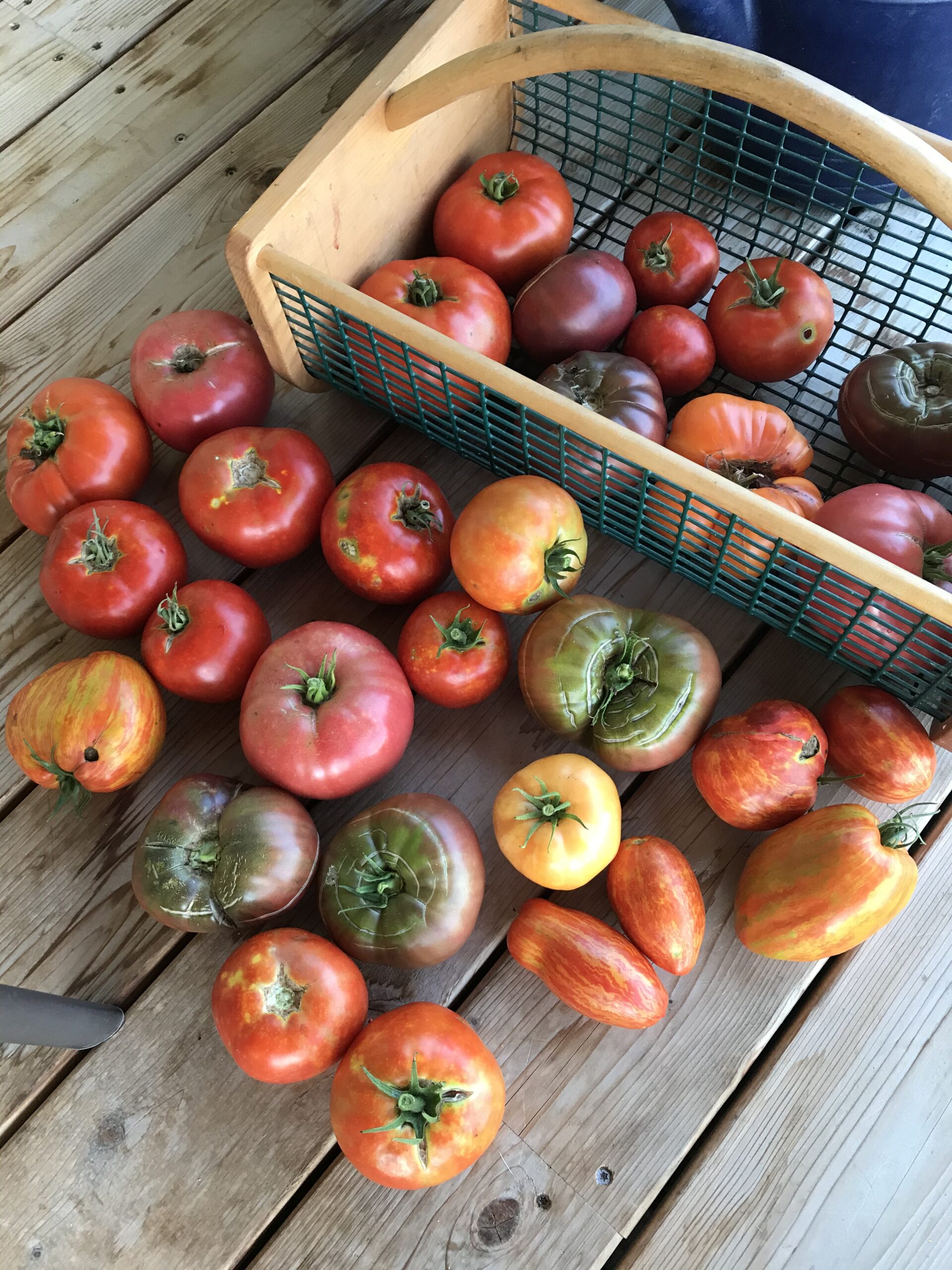
I mentioned how hardy geraniums are one of my favorite perennials. That’s because they grow in sun or part shade, flower on and off all summer, spread to cover an area and have beautiful colored flowers and foliage. Check out some great varieties and how to grow them here.
It’s time to start tomatoes indoors (if you’re in zones 6 and colder) for a spring planting. One group of tomatoes that doesn’t get much attention is storage varieties These varieties last for months after harvest indoors at room temperature. I highlight these, and some cool “winter tomato varieties” for Italy, here.
It’s still pruning season and next on my list are our blueberries. Blueberries are easy to prune and really don’t need lots of attention until they are at least 5 years old. Learn about how and when to prune blueberries in this newsletter.
Until next time I’ll be seeing you, in the garden.
Charlie

Where to Find Charlie: (podcasts, TV and in-person)
- In the Garden (WCAX-TV CBS) – This week: Flower Cutting Gardens
- All Things Gardening on Vt Public Radio– This week: Pruning Hydrangeas
- WJOY In The Garden Podcast– This week: Philodendrons, starting tomatoes, creeping Charlie weeds, using hay mulch and more
- Where’s Charlie Speaking? 4/5/25- Charlotte VT Library: Talk on Ecological Gardening and Native Plants
Cultural and Garden Tour of Scotland
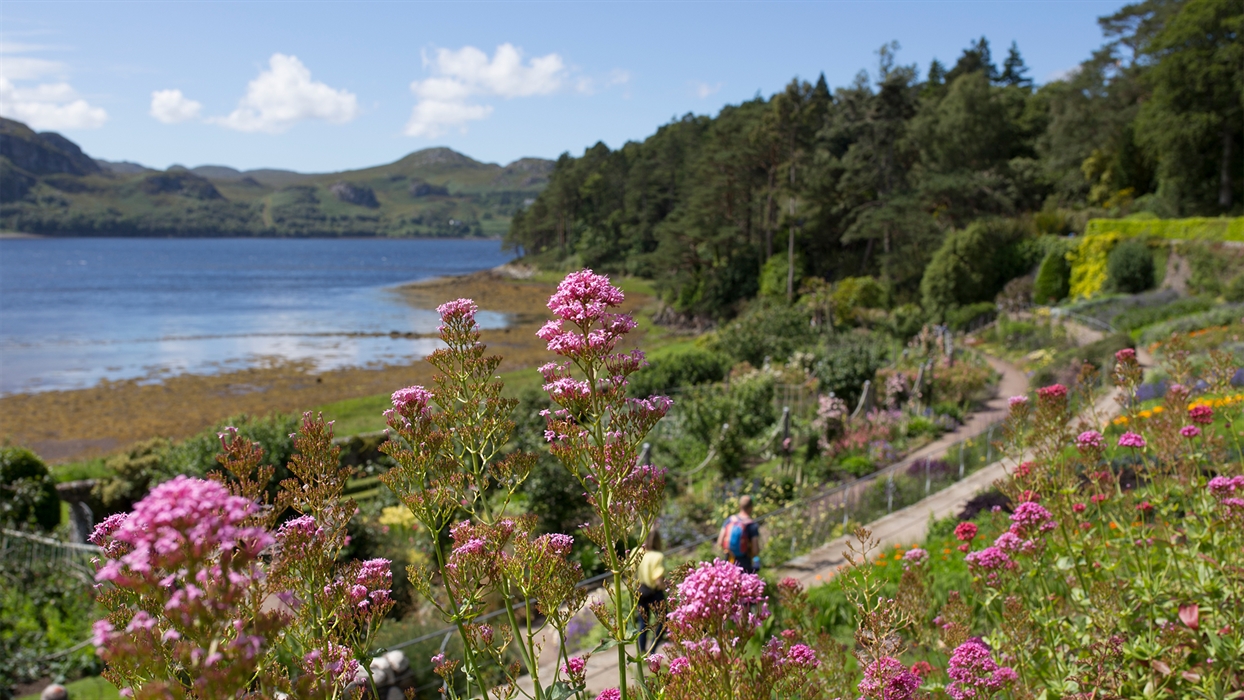
In movies, books, music, history and even in beverages, Scotland has enchanted visitors for centuries. Many people have visited Scotland because of family roots or just a desire to learn more about the culture and beautiful landscapes there. I’m leading a tour to Scotland this fall that will help you appreciate all these aspects of Scotland through the lens of gardens. My Cultural and Garden Tour of Scotland from September 9th to 17th, 2025, will bring us to private and public gardens, amazing natural scenery locations, cultural sites, and much more. We’ll learn about Scotland, first hand, from the owners of gardens as they open their doors to our group. We’ll also see amazing public gardens, castles and cultural sites, including a day at the Highland Games in Pitlochry.

Our trip will start with four nights in Edinburgh. We’ll take day trips to gardens and cultural sites nearby, leaving plenty of time for you to explore museums, galleries and the Scotch whiskey experience on your own. Then we’ll head to Pitlochry for the Highland games. These traditional, outdoor games feature activities such as Pipe Band Competitions, Highland Dancing, Tossing the Caber, Throwing the Hammer, Tug of War, Track Events, and many more. After the games, we head to the capital of the highlands, Inverness for 4 more days of touring. Well visit more private gardens and castles, go to the coast and visit the amazing, terraced Inverewe Gardens and tour, by boat, the famous Loch Ness.
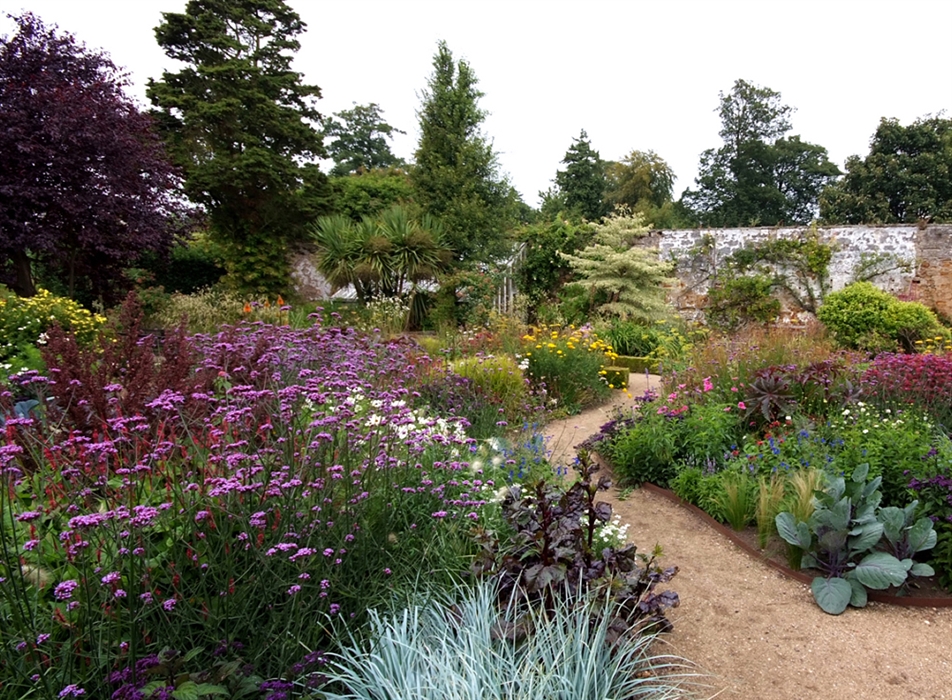
We only take 18 people on our tours and they usually sell out fast. So, this is a unique opportunity to join us as a few people had to bow out. Let me know if you’re interested and I’ll send you the itinerary and registration information. Hopefully, I’ll be seeing you, in Scotland this fall.
Learn More About Cultural and Garden Tour of Scotland here
How to Grow: Hardy Geraniums
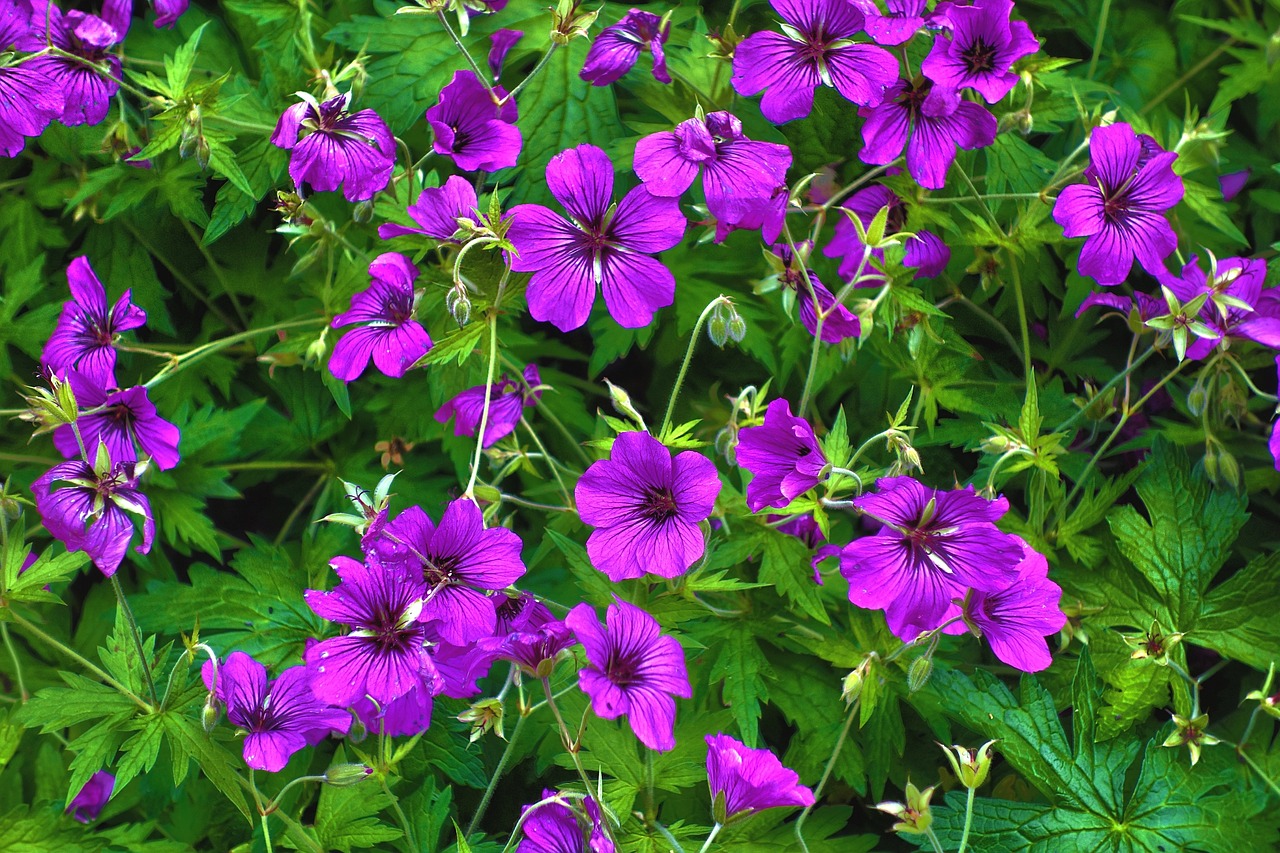
Gardeners are always looking for perennial flowers that are attractive, low maintenance and bloom more than once in summer. My go-to perennial flower for all those qualities is the hardy geranium (Geranium sanguineum). This perennial is different from the Pelargonium or annual geranium we often grow in containers all summer. This plant is low growing, has attractive leaves that turn reddish color in fall and beautiful, buttercup-like flowers in shades from whitish-pink to violet-purple. After flowering the seed heads look like a bird’s beak. Hence the common name “crane’s bill” geranium.
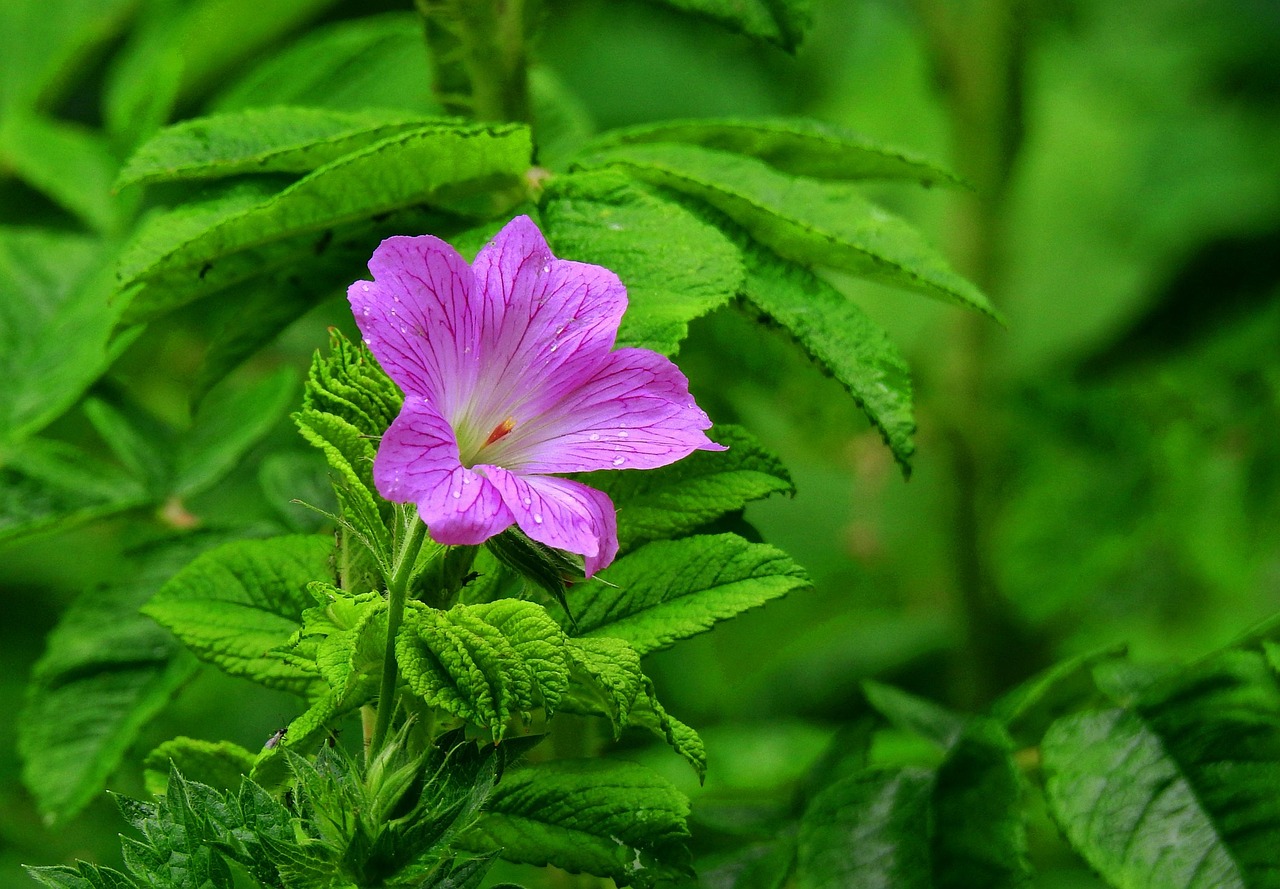
For years pink was the only color of hardy geranium that was widely available. Now there are many other varieties with interesting colored flowers. For example, ‘Bloody’ is a classic variety with pink colored flowers that blooms almost all summer. ‘Max Frei’ is an interesting variation on the classic hardy geranium. It has pink flowers on plants with fern-like foliage. It only grows 6- to 8-inches tall, making it great for cascading over a stone wall or even in a container. ‘Johnson’s Blue’ is a famous blue flowered variety that grows 15- to 18-inches tall with stunning, blue colored flowers. And my favorite is ‘Rozanne’. This hardy geranium can reach 20 inches tall with violet-blue flowers that bloom on and off all summer. It’s a stunner in a perennial flower garden. For something unusual, try Biokovo’. This Croatian variety features white flowers with pink centers.

Hardy geraniums grow in zones 3 to 8 with rarely any problems. They thrive in full to part shade gardens. Part shade locations are good for warmer summer areas. Amend the soil with compost since hardy geraniums like a moist, rich soil. The foliage slowly spreads to 2- to 3-feet wide. It covers the ground so weeds rarely are an issue. After the first flush of flowers, cut back the plant to stimulate new growth and flowering. You can also leave some of the species types to form the iconic crane’s bill seed head. That’s attractive in its own right. Hardy geraniums will repeat flowering a number of times in summer. While a low growing plant, I’ve seen hardy geraniums grow a few feet tall in summer due to weather conditions. Leave plants in fall to naturally die back and clean up the dead foliage in spring after a series of warm days. Divide plants in spring every 3 to 4 years to spread them around the garden.
Learn more about growing hardy geraniums here
How to Grow: Storage Tomatoes
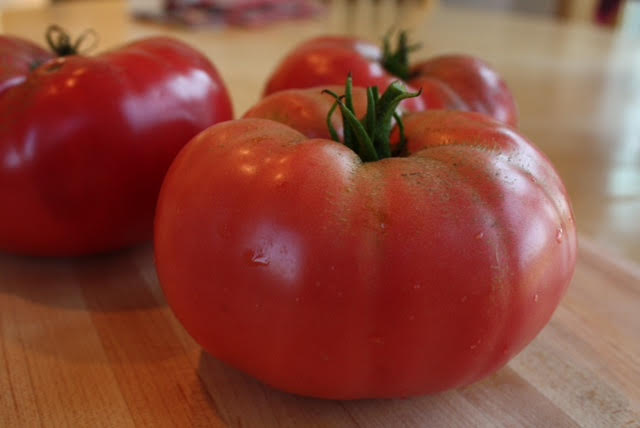
It’s time to start tomato seeds indoors under grow light, for planting outdoors in May. There are many different types of tomatoes to grow including beefsteak, cherry, grape and paste varieties. One group that doesn’t get a lot of attention are storage tomatoes. These are varieties that grow slowly and mature in fall. Their claim to fame is the fruits on these varieties can last for months indoors at room temperatures without rotting.
Some of the storage tomato varieties that are widely available include ‘Long Keeper’, Garden Peach’ and ‘Reverend Morrow’. These are heirlooms that have been passed down for generations. Southern Exposure Seed Exchange is a good seed source for these varieties. Unblemished tomatoes are harvested before frost and allowed to ripen at room temperature. Store so fruits are not touching and check for ripeness and rotting weekly. Red fruited varieties are mature for harvest when they have a pale, pink blush. Some gardeners have had these storage tomatoes last for 4 to 6 months indoors. Although the quality isn’t the same as a summer tomato, it sure beats the tomatoes we get in the North in grocery stores in winter.
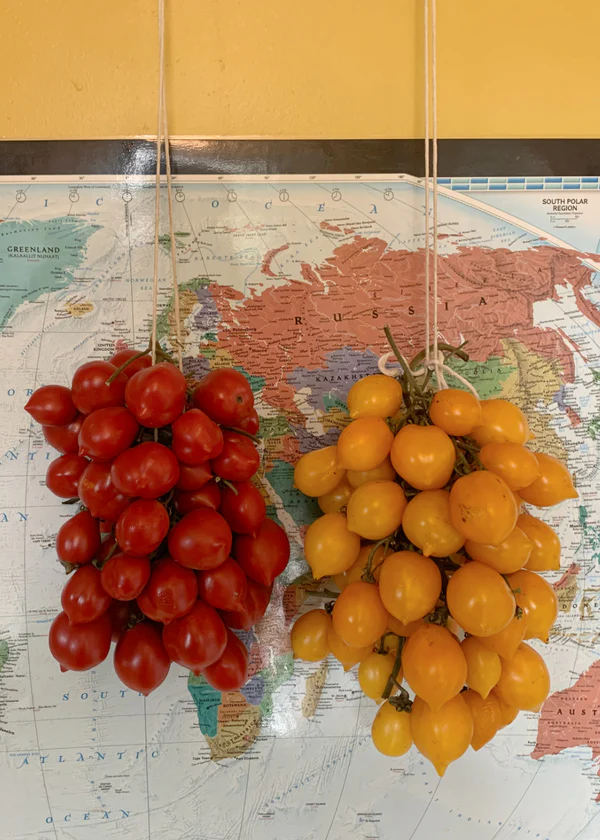
Uprising Seeds
An unusual twist on these storage tomatoes are a group of storage tomatoes from Italy. Pomodora L’inverno or winter tomatoes hale from the slopes of Mt, Vesuvius near Naples, Italy. These varieties are small fruited with a nipple at the end of their fruits, They grown in clusters and are harvested when ripe in fall. ‘Pinienolo Giallo’ and ‘Pinenolo Rosso’ are two available varieties. In Italy they harvest the clusters of these tomatoes and form a ristra to store them in cool kitchens. The fruits are very dry and sweet, so last for months and are great additions to sauces, soups and other cooked recipes. Check out these varieties at Uprising Seeds.
Grow these storage tomatoes as you would other tomato varieties in full sun, on fertile, well-drained soil. Stake or cage them to keep the plants vertical and fruits off the ground. Start the seeds indoors later than normal to aim for a September ripening of the fruits. They will last longer in storage if they ripen in fall.
Go here for more on growing tomatoes
In Our Garden: Pruning Blueberries
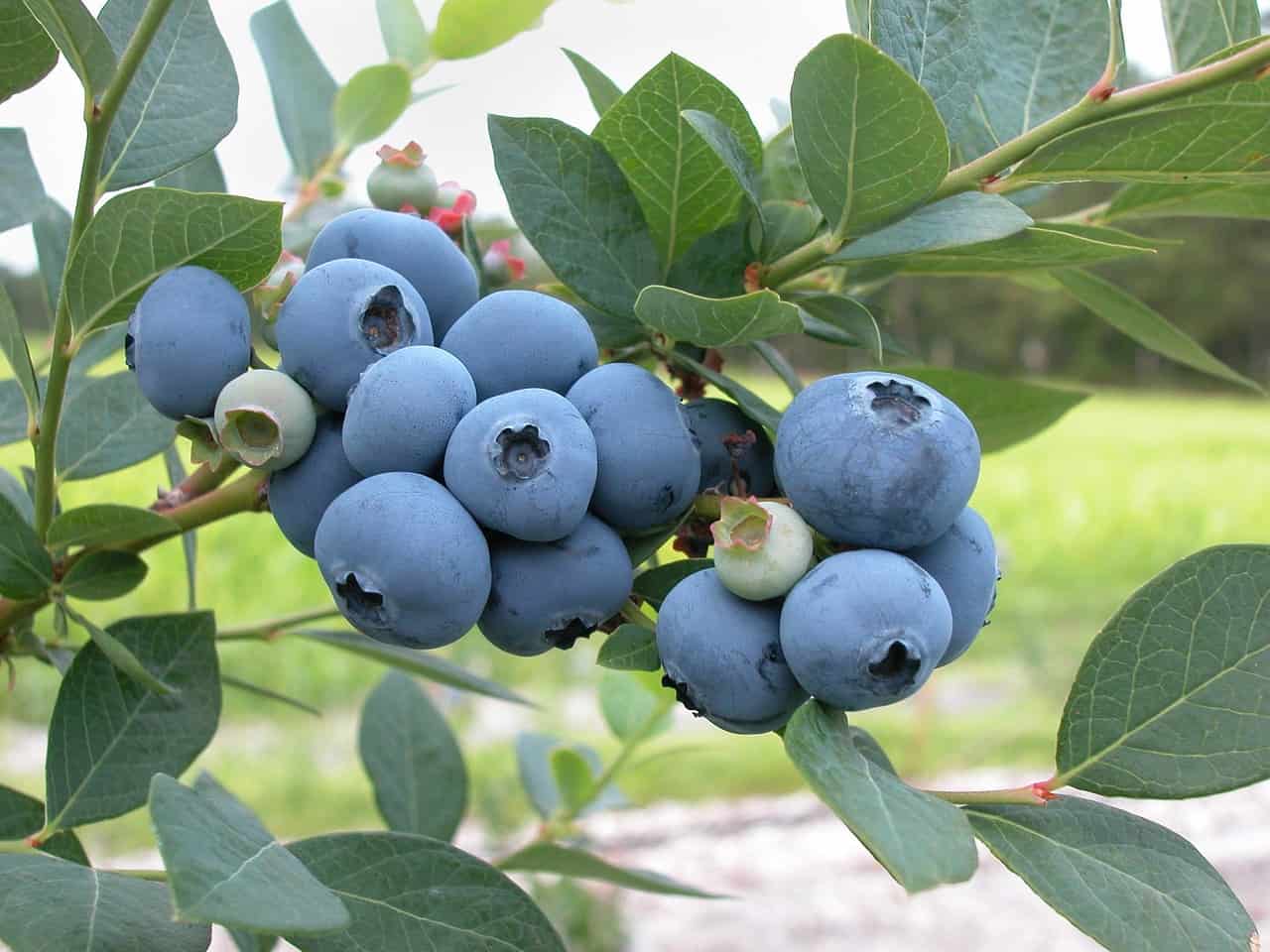
Blueberries are a favorite fruiting bush of many gardeners. If cared for well, they will last for decades producing delicious fruits in summer. Once you get the soil pH to around 5.0 and make sure the soil is loose and well-drained, blueberry plants will take off. We like to mulch our blueberries with wood chips. This keeps the shallow roots moist all summer and weed free. Plus, as the chips decompose they feed our plants.
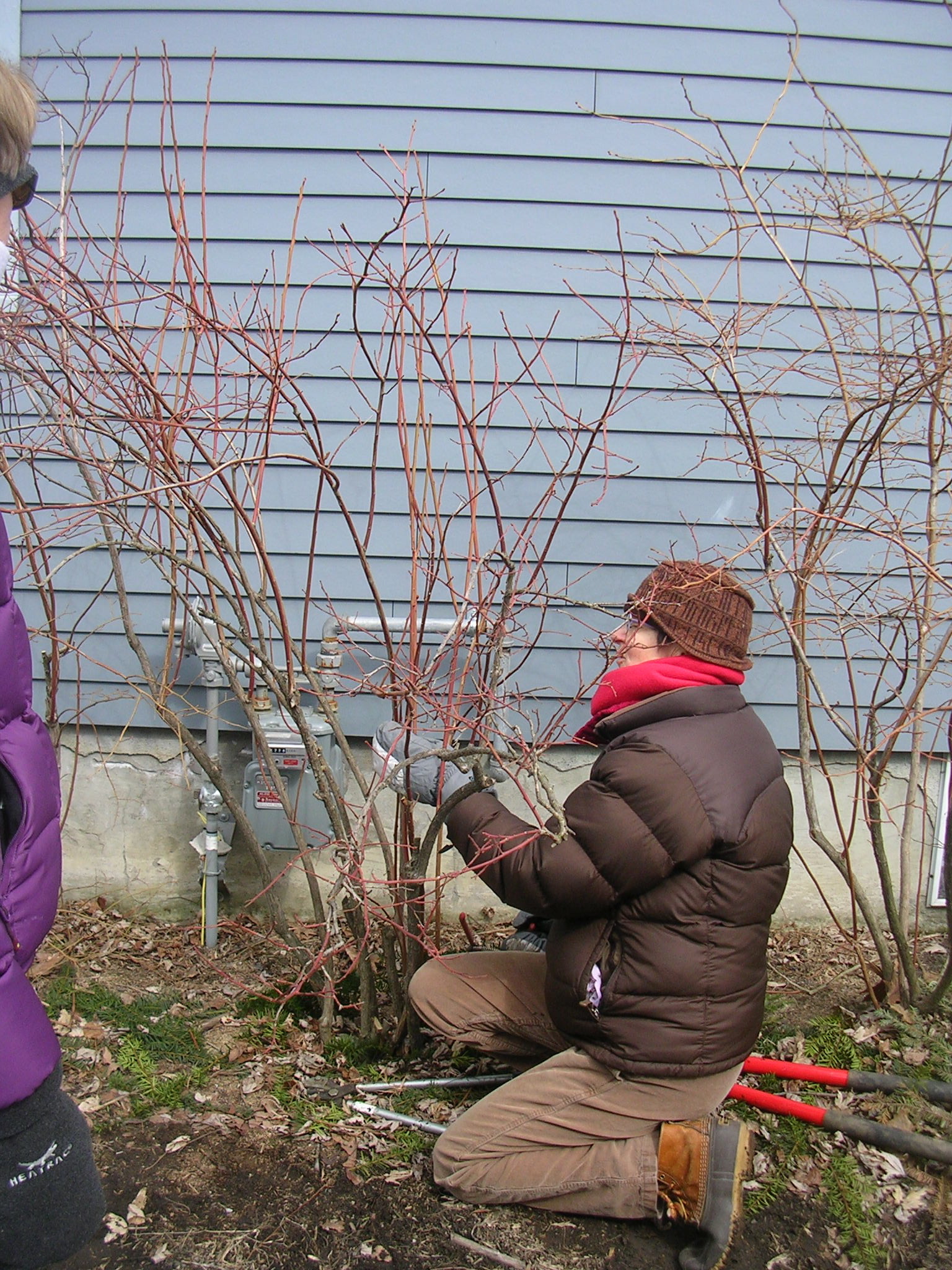
One chore you do have to do with older blueberry bushes is pruning. And now is the time to prune. For the first 5 years, blueberries need little pruning other than removing dead, diseased and broken branches and those that are rubbing against each other. However, after that, they need annual attention. Take a look at the blueberry stems. The youngest stems will have red or yellow color (depending on the variety) and smooth bark. The middle aged stems will have some color, but will also have grey bark developing. The oldest stems are stems with all grey, peeling bark. It’s the oldest stems we’re looking to prune. Check for fat flower buds standing out from the stems on these old stems. Leaf buds are narrow and attached close to the stems. If there are few flower buds, it may be time to prune out that stem. You can prune it back to the ground or to a side branch. You can also remove rubbing or crowded branches as well. At the end of the pruning you should ideally have 7 to 9 strong stems of various ages so you’ll have good fruiting each year.
Go here to learn more about Pruning Blueberries



